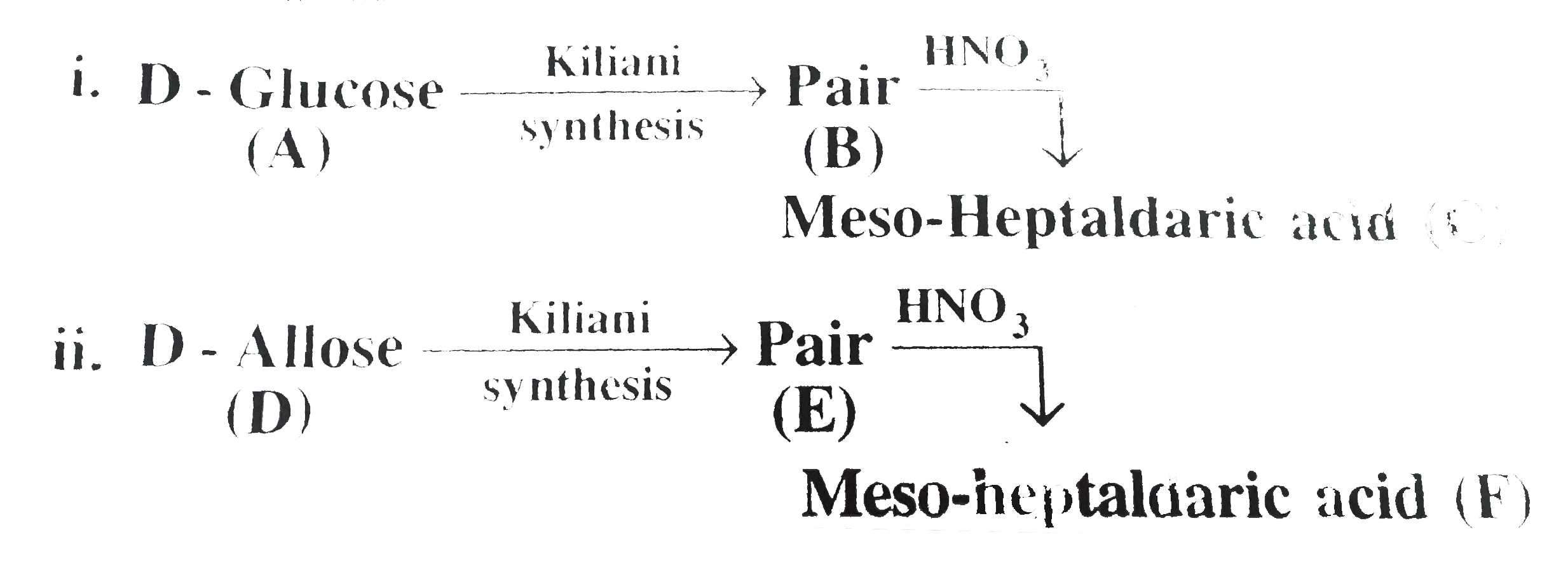(a). The pH values of six solutions A to F are given below:
A=0, B=11, C=6, D=3, E=13, F=8
Which of the above solutions are (i) acids (ii) alkalis?
(b). Name the acids or alkalis used to make (i) can batteries (ii) explosives (iii) soaps (iv) fertilisers.
(i) Acids: A,C and D
(ii) Alkalies: B,E and F
Topper's Solved these Questions
- BOOK - LAKHMIR SINGH & MANJIT KAURCHAPTER - ACID, BASES AND SALTSEXERCISE - Short Answer Type Question3videos
ACID, BASES AND SALTS
- BOOK - LAKHMIR SINGH & MANJIT KAURCHAPTER - ACID, BASES AND SALTSEXERCISE - Long Answer Type Questions3videos
ACID, BASES AND SALTS
- BOOK - LAKHMIR SINGH & MANJIT KAURCHAPTER - ACID, BASES AND SALTSEXERCISE - Questions Based on High Ordre Thinking skills (HOTS)1videos
ACID, BASES AND SALTS
- BOOK - LAKHMIR SINGH & MANJIT KAURCHAPTER - CARBON AND ITS COMPOUNDSEXERCISE - Exercise233videos
CARBON AND ITS COMPOUNDS
Similar Questions
Te pH values of five solutions, A, B,C,D and E are given below:
A 1
B 5
C 7
D 11
E 13 ltbr> Which solution is (i) weakly alkaline (ii) neutral (iii) strongly acidic (iv) strongly alkaline, and (v) weakly acidic?View SolutionIn the following table, the positions of six elements A, B, C, D, E and F are given as they are in the Modern Periodic Table:

On the basis of the above table, answer the following questions:
(i) Name the element which forms only covalent compounds. (ii) Name the element which is a metal with valency three. (iii) Name the element which is a non-metal with valency three. (iv) Out of B and C, whose atomic radius is bigger and why? (v) Write the common name for the family to which the elements D and F belong.View Solution
Knowledge Check
- Question 1 - Select One
A student measured the pH values of four solutions A,B,CandD which were found to be 4,1,13and11 respectively. Which of the following statements are correct about these solutions?
(a) A is strong acid and B is weak acid (b) B is strong acid and D is weak base
(c) D is strong base and C is weak base (d) C is strong base and A is weak acidAa and bBb and cCc and dDb and d - Question 2 - Select One
Four solutions labelled as A, B, C and Dhave pH values 1,8, 3 and 13 respectively.
Which of the following statements about the given solutions is incorrect?ASolution A has higher concentration of hydrogen ions than solution C.BSolution B has lower concentration of hydroxyl ions than solution D.CSolutions A and B will turn red litmus solution blue.DSolution A is highly acidic while solution B is weakly basic.
You are given two solution A and B. The pH of solutin A is 6 and pH of solution A is 6 and pH of solutin B is 8.
(i) Which solution is acidic and which is basic ?
(ii) Which solution has more H+ ion concentration ?
(iii) Why si HCl a stronger acid than acetic acid ?View Solution(i) Explain why is hydrochloric acid a strong acid and acetic acid, a weak acid ? How can it be verfied ?
(ii) Explain why equeous solution of an acid conducts electricity.
(iii) You have four solutions A, B,C and D. The pH of solution A is 6, B is 9, C is 12 and D is 7.
(a) Identify rhe most acidic and most basic solutions.
(b) Arrange the above four solutions in the increasing order of H+ ion concentration.
(c ) State the change in colour of pH paper on dipping in solution C and d.View SolutionStudy the following table in which positions of six elements A,B,C,D,E and F are shown as they are in the modern periodic table.

On the basis of the above table, answer the following question :
(i) Name the element which form only covalent compounds.
(ii) Name the element which is a metal with valency three.
(iii) Name the element which is a non-metal with valency three.
(iv) Out of D and E, which is bigger in size and why ?
(iv) Write the common name for the family to which the elements C and F belongs.View Solution(a) Name one natural source of each of the following acids.
(i) Citric acid (ii) Oxalic acid (iii) Lactic acid (iv) Tartaric acid
(b) Which one is commonly produced by all acids.View SolutionComplete the following reactions:
(i)
(ii)
Explain whether the acids (C) and (F) are same or different. Which pair out of (B) and (E) gives meso-acids (C) and (F)?View SolutionDirections: Study the following information carefully and answer the question given below:
A, B, C, D, E, F, G and H are sitting around a circle facing the centre. A sits fourth to the right of H while second to the left of F. C is not the neighbour of F and B. D sits third to the right of C, H never sits next to G.
Which is the position of B with respect to C?
I. Second to the right
II. Second to the right
III. Third to the left IV. Fifth to the right
1) Only II
2) Only II and III
3) Only I and II
4) Data inadequate
5) Both III and IVView Solution

